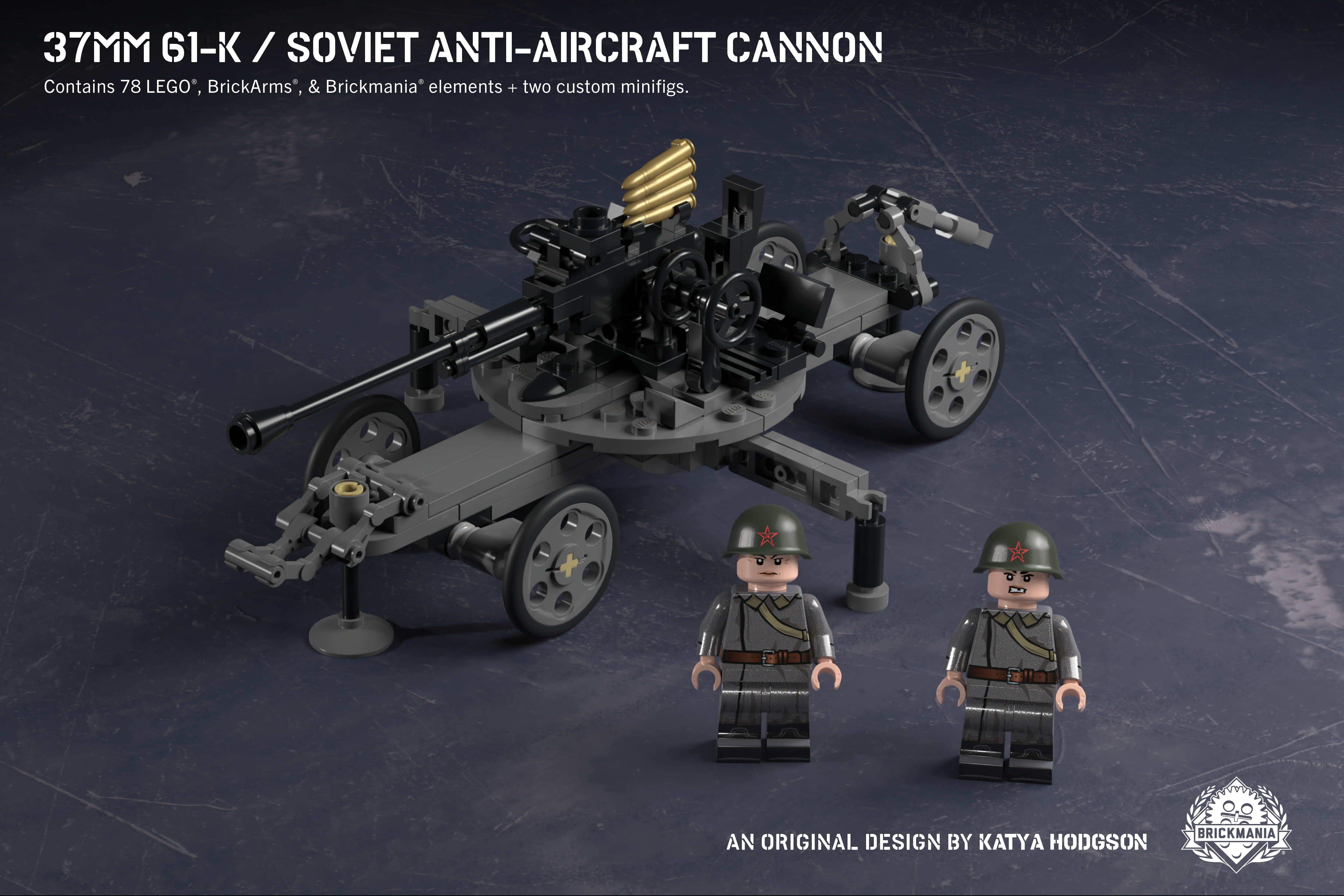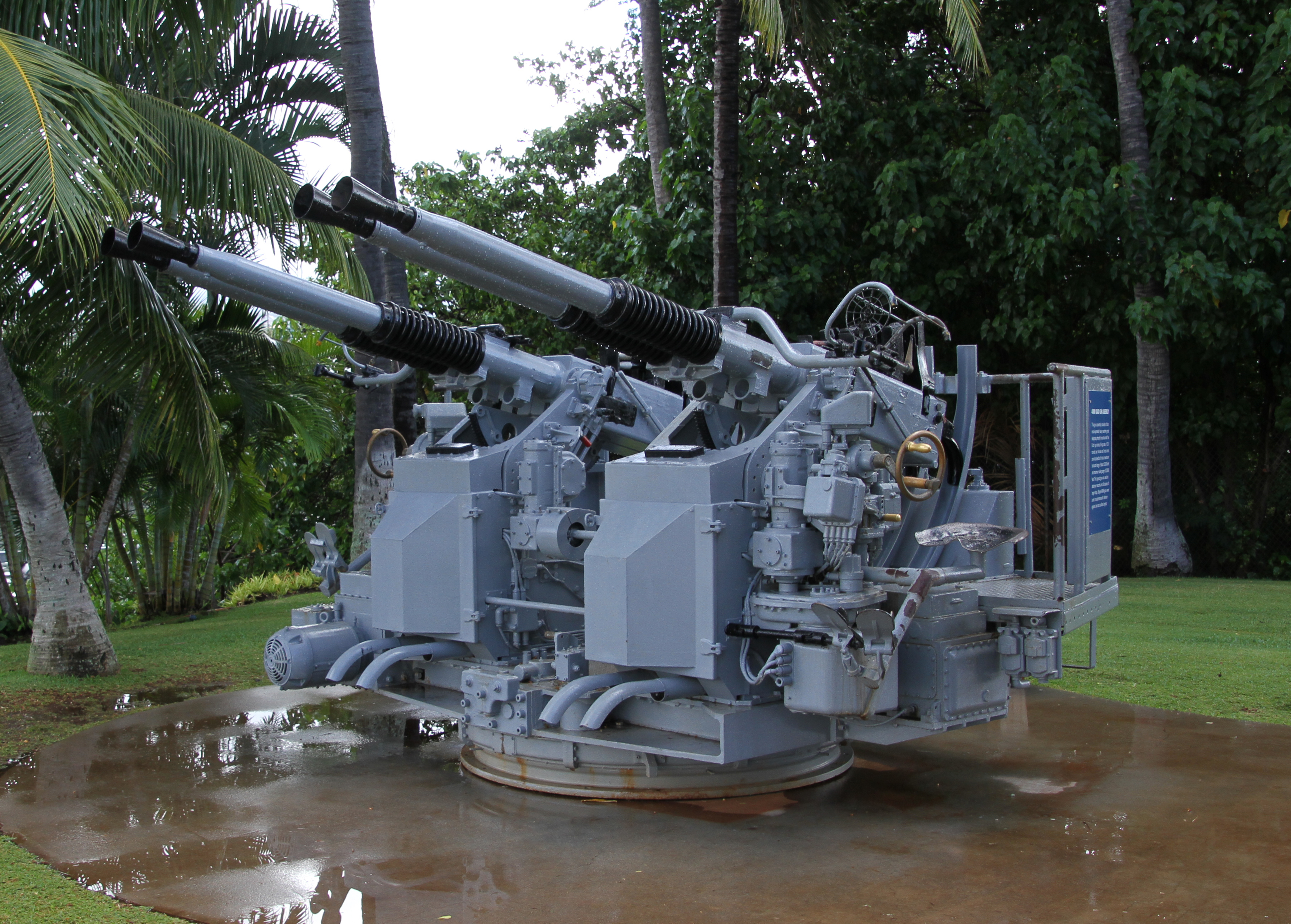Anti Aircraft Cannon - The 7.5 cm L/45 M/16 anti-aircraft gun was designed and built in Norway in the early to mid 20's and was a mediocre design, but greatly improved air defense in Norway where it was adopted.
Early in World War I, the Norwegian military realized that aircraft were a threat that needed to be countered. At first, attempts were made to mount existing field guns on new mounts for high-angle fire, but it soon became apparent that a more specialized weapon was needed. Attempts were made to buy British and French weapons, but due to the ongoing war both countries needed their own.
Anti Aircraft Cannon

The history of the M/16 can be traced back to a letter from the Norwegian Ministry of Defence, dated 17 December 1915. After completing preliminary design work, it was decided to build prototypes and 12 production guns. Detailed design work took longer than expected, and with the war over, any sense of urgency seemed to leave the project. As a result, the prototype was not ready for test firing until May 20, 1920.
German Flak 38 20mm Anti Aircraft Gun Full Automatic Live Firing
The M/16 is a relatively simple design. It is intended for static placement and is mounted on a base allowing 360° lateral movement. The stand allows elevation angles between -1° and 75°. The barrel of the weapon is 45 gauge long with 28 grooves twisted to the right (rifle). The breech is a semi-automatic horizontal wedge: the gunner has to manually operate it to remove the casing from the previous shot, but it closes automatically when a new cartridge is inserted. There is a hydro-pneumatic recoil cylinder under the barrel with a heavy spring to assist the forward movement of the gun at high altitude. It was originally designed to fire under local command, but was later equipped to receive gun position information from the central sight.
The M/16 was operated by a crew of nine: the weapons commander, a soldier for lateral adjustment, a soldier for elevation adjustment, a soldier for breech and firing, a loader, a "fuse adjuster" operator," a "fuse adjuster," "and two more to forage for ammunition and carry empty boxes.
A total of 12 production guns were built. Additional production was reduced due to the perceived lower risk of war in the 1920s; by the 1930s when it became apparent that more anti-aircraft guns were needed, the design was obsolete.
The M/16 is used in the static defense of various military installations in Norway. As priorities changed, the guns were moved, but by the time the Germans invaded Norway on April 9, 1940, six guns were installed near Berg, four at Hort naval base; the remaining two were near Oslo , and more modern weapons such as the 7.5 cm L/45 M/32 for the defense of the capital.
Taiwan Aims For Record Defense Budget After China Drills
Holt's gun could have participated in a battle in port between Norwegian and German ships (see article on HNoMS Olav Tryggvason for details), but due to unclear command and unprepared crew, the gun was captured before it could be enraged.
At Berg, the M/16 was used in an attempt to shoot down German bombers attacking military targets, but the planes were flying too low for the machine guns to be of much use. After the main fortifications of Berg surrendered to the Germans, the anti-aircraft batteries were ordered back.
At Oslo, two M/16s were installed in a battery on Gressholm (an island in the harbour), ideally positioned to take part in the Battle of Fornebu. Norwegian sources say that the battery shot down one or two German bombers, and that several suffered shell shock or abandoned duty, although the crews were not trained (17 of the 44 meters were in uniform for only six days). In addition to this and other issues, one of the guns would jam at the start.

The fate of the M/16s after they were captured by the Germans is unknown, but it is likely that they were used to further the German cause in Norway during the German occupation of Norway. Although every effort has been made to follow the rules of citation style, some discrepancies may still exist. If you have any questions, please consult the appropriate stylebook or other source.
Anti Aircraft Gun At Second Var Museum Of Platanias In Crete Greece Editorial Image
Anti-aircraft gun, a type of artillery fired from the ground or from a ship to defend against air attack. The development of anti-aircraft weapons began as early as 1910, when the aircraft became an effective weapon. In World War I, field guns of approximately 90 mm (3.5 in) caliber were converted into anti-aircraft guns from mounts capable of firing almost vertically. Targeting methods were not adequate, however, and in the interwar decades great advances were made in the development of rangefinders, searchlights, timed fuzes, and gun placement mechanisms to help guns hit fast-moving aircraft Target
In World War II, automatic and rapid-fire anti-aircraft guns were introduced, radar was used for target tracking, and small radio-wave proximity fuzes detonated the ammunition when it approached the target. To counter dive bombers and low-altitude attack aircraft, a 40 mm (1.5 in) gun, originally produced by the Swedish company Bofors, was widely used by the British and American armies. It fired 2 lb (0.9 kg) shells at a rate of 120 rounds per minute at an altitude of 2 miles (3.2 km). The Soviet 37mm gun was based on this gun. Heavier anti-aircraft guns, up to 120 mm, were used against high-flying bombers. The most effective of these is the German 88 mm
In 1953, the U.S. Army introduced the Skysweeper, a 75mm automatic gun that fired 45 rounds per minute, guided and fired by its own radar computer system. Heavy anti-aircraft guns like these were phased out with the introduction of surface-to-air guided missiles in the 1950s and 1960s, although 20-40mm radar-guided cannons continued to provide defense against low-flying aircraft and helicopters. .Size This preview image: 716 × 599 pixels. Other resolutions: 287 × 240 pixels | 573 × 480 pixels | 917 × 768 pixels | 1,223 × 1,024 pixels | 2,446 × 2,048 pixels | 3,380 × 2,830 pixels.
The 3.7-inch QF anti-aircraft gun was the main heavy-duty anti-aircraft gun in Britain during World War II, equivalent to the slightly larger 94mm German 88mm anti-aircraft gun. It remained in use after the war until the anti-aircraft guns were replaced by guided missiles in the late 1950s.
Pla Holds Anti Aircraft Drills Amid Frequent Us Reconnaissance Sorties
This image was originally posted to Flickr by Jim Linwood at https://www.flickr.com/photos/54238124@N00/3558172815. This image was reviewed by the FlickreviewR robot on July 4, 2009 and confirmed to be licensed under the terms of cc-by-2.0.
{{Info |Description= The 3.7" QF AA was the main British heavy anti-aircraft gun of World War II, equivalent to the German 88mm anti-aircraft gun in a slightly larger 94mm caliber. It remained in use after the war until the anti-aircraft guns were replaced
This file contains additional information, such as Exif metadata, which may have been added by a digital camera, scanner, or the software program used to create or scan it. If the file has been modified from its original state, some details, such as timestamps, may not fully reflect those of the original file. Timestamps are only as accurate as the camera clock and can be completely wrong. If you click on a link and make a purchase, we may receive a small commission. Read our editorial policy.

Confused about how to destroy flak guns in Far Cry 6? There's a ton of in-game tutorials in Ubisoft's latest open-world FPS, but they can really go through the tutorials to take down those massive, seemingly indestructible towers pointing towards the sky. These things are nearly impossible to destroy without the right weapons, so read on to learn how to take down flak guns in Far Cry 6.
Millimetre Bofors 27 Bk Anti Aircraft Guns Bought From Sweden Were...
Flak guns in Far Cry 6 are immune to normal gunfire. This is painful because the towers restrict your airspace, making it difficult to move around Yara. It's important to destroy these towers so that they don't shoot you down when you fly within half a kilometer of them in a helicopter, plane, or other craft.
Fortunately, you can destroy flak with dynamite or a weapon that deals explosive damage. If you're not sure how burst damage works, check out our tutorial on the different ammo types in Far Cry 6. Terminator is your game.
You can also use explosive devices like dynamite to blow up these towers or rocket launchers and grenades. Interestingly, a bow loaded with burst damage arrows will also work, but most conventional weapons (including anti-vehicle sniper rifles) won't scratch it.
Because they have no health bars, a single shot from either of these weapons will destroy the flak; you don't have to worry about dealing continuous damage.
Inch Anti Aircraft Gun M3
Charter an aircraft, rent an aircraft, becoming an aircraft mechanic, towing an aircraft, aircraft an fittings, an aircraft hardware, design an aircraft, buying an aircraft, an aircraft, selling an aircraft, being an aircraft mechanic, pc 12 aircraft

0 Comments